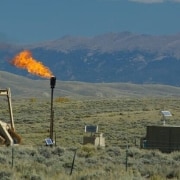⚠️ IMPORTANT LEGAL DISCLAIMER:
The information provided on this page is for general informational purposes only and does not constitute legal, financial, or investment advice. Oil and gas laws, mineral rights regulations, and royalty structures vary significantly by state and jurisdiction. While we strive to provide accurate and up-to-date information, no guarantee is made to that effect, and laws may have changed since publication.
You should consult with a licensed attorney specializing in oil and gas law in your jurisdiction, a qualified financial advisor, or other appropriate professionals before making any decisions based on this material. Neither the author nor the publisher assumes any liability for actions taken in reliance upon the information contained herein.
In the world of resource extraction, stakeholders rely on royalty rates to ensure they are compensated fairly for the use of their resources or creations, such as oil, gas, minerals, and intellectual property. Negotiating royalty rates in competitive markets, however, presents unique challenges and opportunities. The complexities of balancing competitive pressures with fair compensation require a deep understanding of market dynamics, legal frameworks, and the value of the assets involved.
This article explores the intricacies of negotiating royalty rates in competitive markets. We will cover the key factors that influence these negotiations, the strategies that can help stakeholders secure favorable terms, and the best practices for ensuring that the negotiated rates reflect the true value of the resources or intellectual property involved.
Understanding Royalty Rates and Their Importance
One party (the licensee) pays royalty rates to another party (the licensor or resource owner) for the right to use a particular resource, product, or intellectual property. Typically, these parties calculate the fees as a percentage of the revenue generated from the use of the asset, although some industries also use fixed-fee arrangements. The key to a successful royalty negotiation is ensuring that both parties receive appropriate compensation and that the terms align with the value of the resource or asset in question.
In the context of resource extraction, such as oil, gas, or minerals, royalty rates are crucial because they directly affect the revenue generated by resource owners, often governments or private landowners. The rates set the terms for how much of the income from extraction will be paid to the owner of the resource, which can significantly impact their financial health and the viability of the operation.
Royalty rates determine how much innovators and creators in industries dealing with intellectual property—such as technology, entertainment, and pharmaceuticals—will be compensated for their work. These rates are central to the sustainability of creative enterprises, ensuring that those who develop intellectual property receive fair compensation for their contributions.
The Competitive Market Landscape
Negotiating royalty rates in a competitive market introduces several unique factors that can influence the final terms. A competitive market often implies that multiple stakeholders are vying for access to the same resources or intellectual property, which can shift the dynamics of negotiations. In these environments, several elements need to be considered:
- Market Demand and Supply: In competitive markets, the supply of resources or intellectual property must be weighed against the demand for them. If demand is high and the resource is scarce, licensors can often command higher royalty rates. Conversely, if the market is saturated or the resource is easily accessible, royalty rates may be driven down as licensors compete for contracts.
- Industry Standards and Precedents: In competitive markets, it is essential to understand prevailing industry standards for royalty rates. Historical data and comparisons with similar transactions provide insight into what terms are reasonable and what rate is considered fair within the context of the broader market.
- Negotiation Leverage: The leverage held by each party involved in the negotiation is a significant factor in determining the royalty rate. The resource owner or intellectual property holder’s ability to influence the negotiation process often depends on their market position, the uniqueness of their asset, and their negotiating tactics.
Key Factors Affecting Royalty Rate Negotiations
Several factors can significantly influence the royalty rate negotiation process. Understanding these factors and how to use them to one’s advantage can make all the difference in achieving favorable terms.
The Value of the Resource or Intellectual Property
The licensors perceive the value of the asset being licensed as one of the most significant factors influencing royalty rate negotiations. The more valuable they perceive the resource or intellectual property to be, the higher the royalty rate they can typically negotiate. The valuation process involves assessing not only the current market value but also the long-term potential of the resource or asset.
For example, a company negotiating for access to an oil field that is rich in untapped reserves will be able to command a higher royalty rate than one negotiating for rights to a well with diminishing yields. Similarly, intellectual property related to a groundbreaking technological innovation or a popular entertainment franchise will often justify higher royalty rates than less innovative or less in-demand assets.
Duration and Scope of Use
Another critical factor in negotiating royalty rates is the duration and scope of the license agreement. A long-term agreement may warrant a different royalty rate than a short-term contract, depending on the risk involved. Additionally, the geographical scope of the rights being granted can influence the rate. A global license for intellectual property or an oil field that spans multiple regions may justify a higher royalty rate due to the expanded market opportunities.
Licensing exclusivity is also a crucial consideration. If the licensor licenses a resource or intellectual property exclusively, allowing only the licensee to use the asset, the licensor may set a higher royalty rate than if they grant non-exclusive rights, allowing multiple licensees to use the same resource.
Market Conditions and Economic Trends
The overall economic environment, both locally and globally, plays a significant role in determining royalty rates. In times of economic prosperity, markets tend to be more favorable, and licensors may have greater negotiating power. On the other hand, during economic downturns, companies may be more inclined to negotiate lower royalty rates to ensure they can secure deals and maintain revenue streams.
The cyclical nature of specific industries, such as the oil and gas sector, also affects royalty negotiations. For instance, during periods of high commodity prices, royalty rates may rise due to increased demand and profitability. During periods of low prices, resource owners may find themselves under pressure to lower their rates to remain competitive or ensure continued development.
The Risk and Reward Balance
Negotiating royalty rates involves balancing the potential rewards with the risks associated with the transaction. Risk factors can include operational risks, environmental concerns, regulatory hurdles, and political instability, particularly in the case of resource extraction projects. As the project involves more risk, licensees or operators may expect a lower royalty rate, as they will seek to mitigate their exposure.
For example, an oil and gas project in a politically unstable region may face higher operational risks, which would affect the royalty rates. Conversely, a project that involves minimal risk, such as one located in a well-established, low-risk area, might command higher royalties because the financial and operational risks are lower.
Negotiation Strategies for Securing Favorable Royalty Rates
Navigating the competitive landscape of royalty negotiations requires strategic thinking, effective communication, and thorough market knowledge. Below are some proven strategies for securing favorable terms in competitive royalty rate negotiations.
Conduct Comprehensive Market Research
Before entering into any negotiation, it is critical to conduct thorough market research. Understanding the current royalty rate trends within the specific industry and region, as well as comparing the terms of similar agreements, provides a solid foundation for negotiating fair and competitive rates.
Researching the financial health, market position, and track record of potential partners or licensees is also essential. Knowing your negotiation counterparts’ strengths, weaknesses, and priorities can help you identify areas where you may have leverage or where they may be willing to offer concessions.
Establish Clear Objectives
Clear goals and objectives ensure that all parties align on what is expected from the agreement before they enter negotiations. Establishing these objectives early allows for more focused negotiations and helps prevent unnecessary delays or disputes. Key considerations should include desired royalty percentages, term lengths, exclusivity terms, and the potential for future renewals or adjustments based on changing market conditions.
Prepare for Compromise
While it’s important to strive for favorable terms, successful royalty rate negotiations often involve some degree of compromise.
Prepare to make concessions where necessary, especially if you want to avoid losing a valuable deal. Prioritize the most critical aspects of the agreement—whether that be a higher royalty rate, longer contract duration, or broader scope of use—while remaining flexible on other, less critical terms.
Develop a Solid Legal Framework
One of the most important aspects of any royalty rate agreement is how the legal framework structures it. The parties involved should clearly define the terms and conditions of the deal to avoid potential disputes down the line. The terms and conditions of the deal should be clearly defined to avoid potential disputes down the line. This includes ensuring that royalty rates are based on fair market value and that the agreement includes protections for both parties.
Having experienced legal counsel during the negotiation process is crucial.
A lawyer with expertise in intellectual property, natural resource extraction, or licensing agreements can provide valuable insight into what is standard in the market and advise on the negotiation tactics that negotiators can use to secure favorable terms.
Foster Long-Term Relationships
While companies often see royalty rate negotiations as one-time transactions, they can lay the groundwork for long-term business relationships.
Building a foundation of trust and cooperation can lead to better terms in the future and can help ensure that both parties continue to benefit from the arrangement.
Be open to adjusting royalty rates or contract terms as the market evolves or as both parties experience success. A flexible and mutually beneficial approach to negotiations can create opportunities for future collaboration, leading to more profitable and sustainable business partnerships.
Best Practices for Managing Royalty Agreements
Once a royalty rate agreement is in place, managing the ongoing relationship is just as important as negotiating the initial terms. Transparency and regular communication are essential to maintaining a positive partnership.
Both parties should work together to ensure that they adhere to the terms of the agreement and that they make any adjustments to the royalty rate fairly and equitably based on changing market conditions.
Establishing clear reporting mechanisms for monitoring revenue generated by the use of the resource or intellectual property helps both parties track performance and ensure that royalty payments are accurate. Additionally, regular audits can help prevent disputes and ensure compliance with the terms of the agreement.
Navigating the Complexities of Royalty Negotiations in Competitive Markets
Negotiating royalty rates in competitive markets is a delicate balance of market knowledge, strategic thinking, and effective communication. By understanding the key factors that influence royalty rates, preparing for negotiations, and leveraging effective strategies, stakeholders can secure favorable terms that reflect the value of the resources or intellectual property involved.
In competitive markets, the stakes are high, but with the right approach, both parties can benefit from mutually beneficial agreements that create long-term financial and operational success. As industries continue to evolve, the ability to negotiate royalty rates effectively will remain a critical skill for resource owners, intellectual property holders, and business partners alike.
Do you have further questions related to Negotiating Royalty Rates? Feel free to contact us here.
Remember: This information is for educational purposes only. Consult qualified professionals for advice specific to your situation and jurisdiction.










